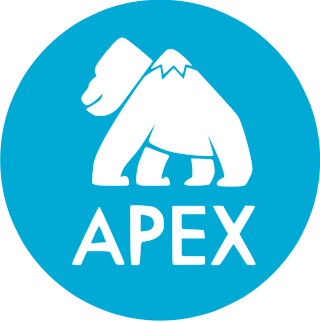Apache Hadoop is a collection of open-source software utilities that facilitates using a network of many computers to solve problems involving massive amounts of data and computation. It provides a software framework for distributed storage and processing of big data using the MapReduce programming model. Hadoop was originally designed for computer clusters built from commodity hardware, which is still the common use. It has since also found use on clusters of higher-end hardware. All the modules in Hadoop are designed with a fundamental assumption that hardware failures are common occurrences and should be automatically handled by the framework.

Cassandra is a free and open-source, distributed, wide-column store, NoSQL database management system designed to handle large amounts of data across many commodity servers, providing high availability with no single point of failure. Cassandra offers support for clusters spanning multiple datacenters, with asynchronous masterless replication allowing low latency operations for all clients. Cassandra was designed to implement a combination of Amazon's Dynamo distributed storage and replication techniques combined with Google's Bigtable data and storage engine model.
DataNucleus is an open source project which provides software products around data management in Java. The DataNucleus project started in 2008.
Structured storage is computer storage for structured data, often in the form of a distributed database. Computer software formally known as structured storage systems include Apache Cassandra, Google's Bigtable and Apache HBase.

Apache Hive is a data warehouse software project built on top of Apache Hadoop for providing data query and analysis. Hive gives an SQL-like interface to query data stored in various databases and file systems that integrate with Hadoop. Traditional SQL queries must be implemented in the MapReduce Java API to execute SQL applications and queries over distributed data. Hive provides the necessary SQL abstraction to integrate SQL-like queries (HiveQL) into the underlying Java without the need to implement queries in the low-level Java API. Since most data warehousing applications work with SQL-based querying languages, Hive aids the portability of SQL-based applications to Hadoop. While initially developed by Facebook, Apache Hive is used and developed by other companies such as Netflix and the Financial Industry Regulatory Authority (FINRA). Amazon maintains a software fork of Apache Hive included in Amazon Elastic MapReduce on Amazon Web Services.
Within database management systems, the RCFile is a data placement structure that determines how to store relational tables on computer clusters. It is designed for systems using the MapReduce framework. The RCFile structure includes a data storage format, data compression approach, and optimization techniques for data reading. It is able to meet all the four requirements of data placement: (1) fast data loading, (2) fast query processing, (3) highly efficient storage space utilization, and (4) a strong adaptivity to dynamic data access patterns.
Apache Accumulo is a highly scalable sorted, distributed key-value store based on Google's Bigtable. It is a system built on top of Apache Hadoop, Apache ZooKeeper, and Apache Thrift. Written in Java, Accumulo has cell-level access labels and server-side programming mechanisms. According to DB-Engines ranking, Accumulo is the third most popular NoSQL wide column store behind Apache Cassandra and HBase and the 67th most popular database engine of any type (complete) as of 2018.

Apache Drill is an open-source software framework that supports data-intensive distributed applications for interactive analysis of large-scale datasets. Built chiefly by contributions from developers from MapR, Drill is inspired by Google's Dremel system. Drill is an Apache top-level project. Tom Shiran is the founder of the Apache Drill Project. It was designated an Apache Software Foundation top-level project in December 2016.
Sqoop is a command-line interface application for transferring data between relational databases and Hadoop.
Apache Impala is an open source massively parallel processing (MPP) SQL query engine for data stored in a computer cluster running Apache Hadoop. Impala has been described as the open-source equivalent of Google F1, which inspired its development in 2012.
Druid is a column-oriented, open-source, distributed data store written in Java. Druid is designed to quickly ingest massive quantities of event data, and provide low-latency queries on top of the data. The name Druid comes from the shapeshifting Druid class in many role-playing games, to reflect that the architecture of the system can shift to solve different types of data problems.

Apache Spark is an open-source unified analytics engine for large-scale data processing. Spark provides an interface for programming clusters with implicit data parallelism and fault tolerance. Originally developed at the University of California, Berkeley's AMPLab, the Spark codebase was later donated to the Apache Software Foundation, which has maintained it since.

Apache Trafodion is an open-source Top-Level Project at the Apache Software Foundation. It was originally developed by the information technology division of Hewlett-Packard Company and HP Labs to provide the SQL query language on Apache HBase targeting big data transactional or operational workloads. The project was named after the Welsh word for transactions. As of April 2021, it is no longer actively developed.
Infinispan is a distributed cache and key-value NoSQL data store software developed by Red Hat. Java applications can embed it as library, use it as a service in WildFly or any non-java applications can use it, as remote service through TCP/IP.
Apache Phoenix is an open source, massively parallel, relational database engine supporting OLTP for Hadoop using Apache HBase as its backing store. Phoenix provides a JDBC driver that hides the intricacies of the NoSQL store enabling users to create, delete, and alter SQL tables, views, indexes, and sequences; insert and delete rows singly and in bulk; and query data through SQL. Phoenix compiles queries and other statements into native NoSQL store APIs rather than using MapReduce enabling the building of low latency applications on top of NoSQL stores.

Apache Kylin is an open source distributed analytics engine designed to provide a SQL interface and multi-dimensional analysis (OLAP) on Hadoop and Alluxio supporting extremely large datasets.

Apache Apex is a YARN-native platform that unifies stream and batch processing. It processes big data-in-motion in a way that is scalable, performant, fault-tolerant, stateful, secure, distributed, and easily operable.

Apache Ignite is a distributed database management system for high-performance computing.
Apache IoTDB is a column-oriented open-source, time-series database (TSDB) management system written in Java. It has both edge and cloud versions, provides an optimized columnar file format for efficient time-series data storage, and TSDB with high ingestion rate, low latency queries and data analysis support. It is specially optimized for time-series oriented operations like aggregations query, downsampling and sub-sequence similarity search. The name IoTDB comes from Internet of Things (IoT) Database, which means it was designed as an IoT-native TSDB that resolves the pain points of the typical IoT scenarios, including massive data generation, high frequency sampling, out-of-order data, specific analytics requirements, high costs of storage and operation & maintenance, low computational power of IoT devices.








